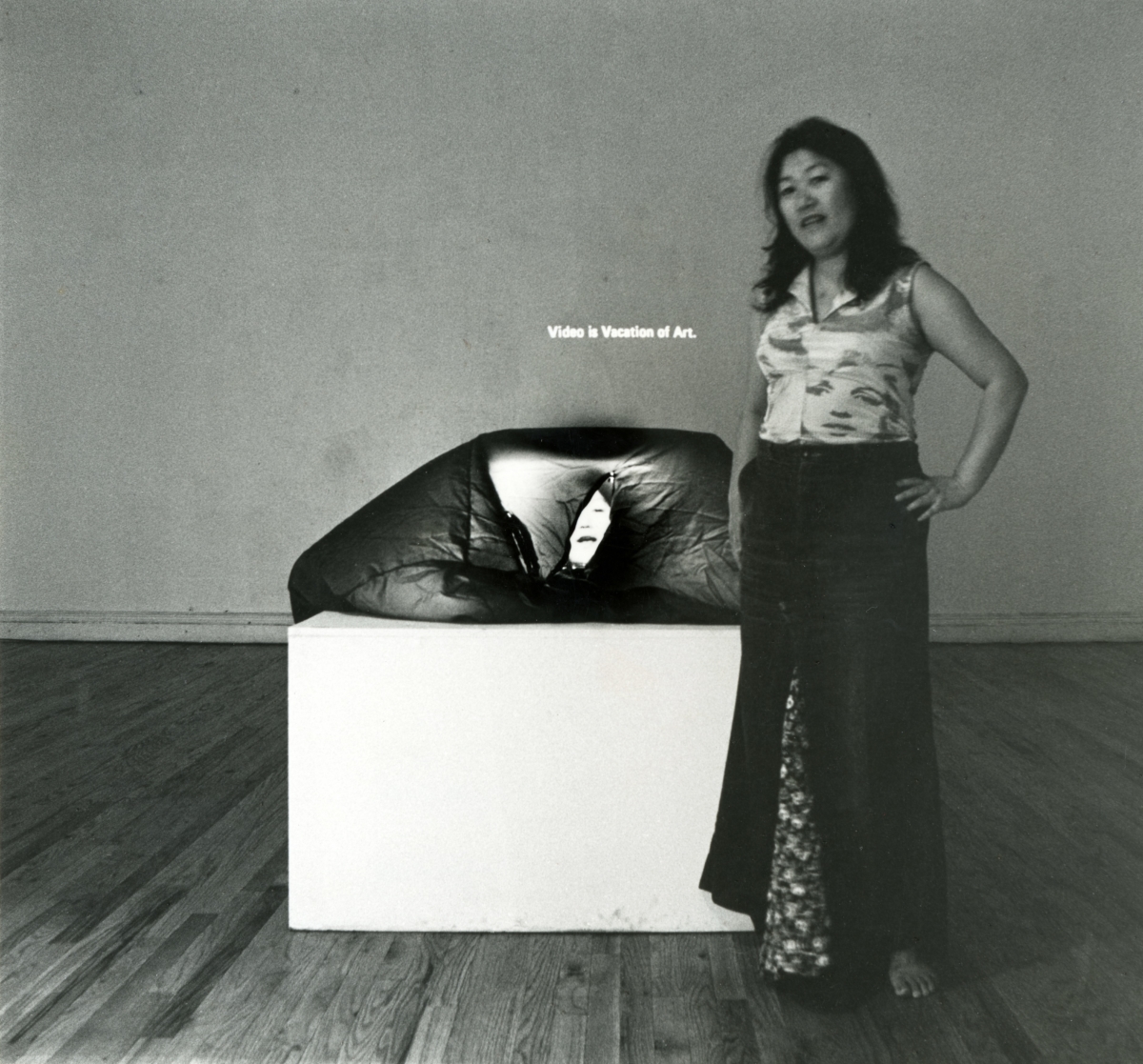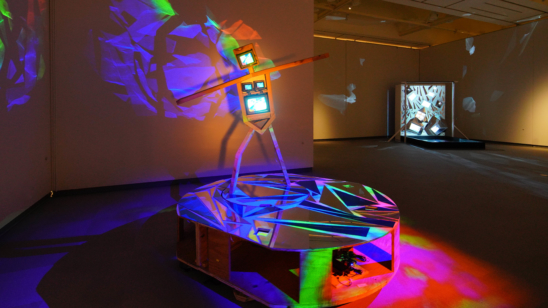
Shigeko Kubota
Born in Niigata in 1937, died in New York in 2015. After graduating from Tokyo University of Education (present-day Tsukuba University) in 1960, she befriended avant-garde artists in Tokyo, such as Yoko Ono and members of Group Ongaku and Hi-Red Center. She held her first solo exhibition in Naiqua Gallery in 1963, but flew to New York in the following year to participate in Fluxus. She created some multiples and a performance piece through Fluxus. From the early 1970s she began working in video. She emerged as a contemporary artist with her “video sculpture” which combined video and three-dimensional structure. Her Duchampiana series drew particular attention, with Nude Descending a Staircase becoming the first video installation to be acquired for the collection of the Museum of Modern Art, New York.
Beginning with Documenta 6 in 1977, she was often invited to various international exhibitions, such as Venice Biennale. Her first retrospective exhibition opened in the United States in 1991,traveled to Europe and Japan in 1993. She received the Maya Deren Award as a Japanese artist for the first time. After 1996, she focused on assisting her husband Nam June Paik, who had suffered a stroke, and later put aside her art activities because of her own illness. In 2015, The Shigeko Kubota Video Art Foundation was established at the artist’s bequest and enabled the preservation and restoration of her artwork and documents. Reevaluation of her work is underway: Kubota’s first posthumous survey exhibition opened in Niigata, traveled to Osaka, and will travel to Tokyo in November 2021. The Museum of Modern Art, New York is also holding her solo exhibition in 2021.
- Website :
- Shigeko Kubota Video Art Foundation
- Thumbnail :
- Mary Lucier, Shigeko Kubota with Her Video Poem, 1975 Mary Lucier © 1975
- Text :
- Mayumi Hamada, Curator, The Niigata Prefectural Museum of Modern Art
